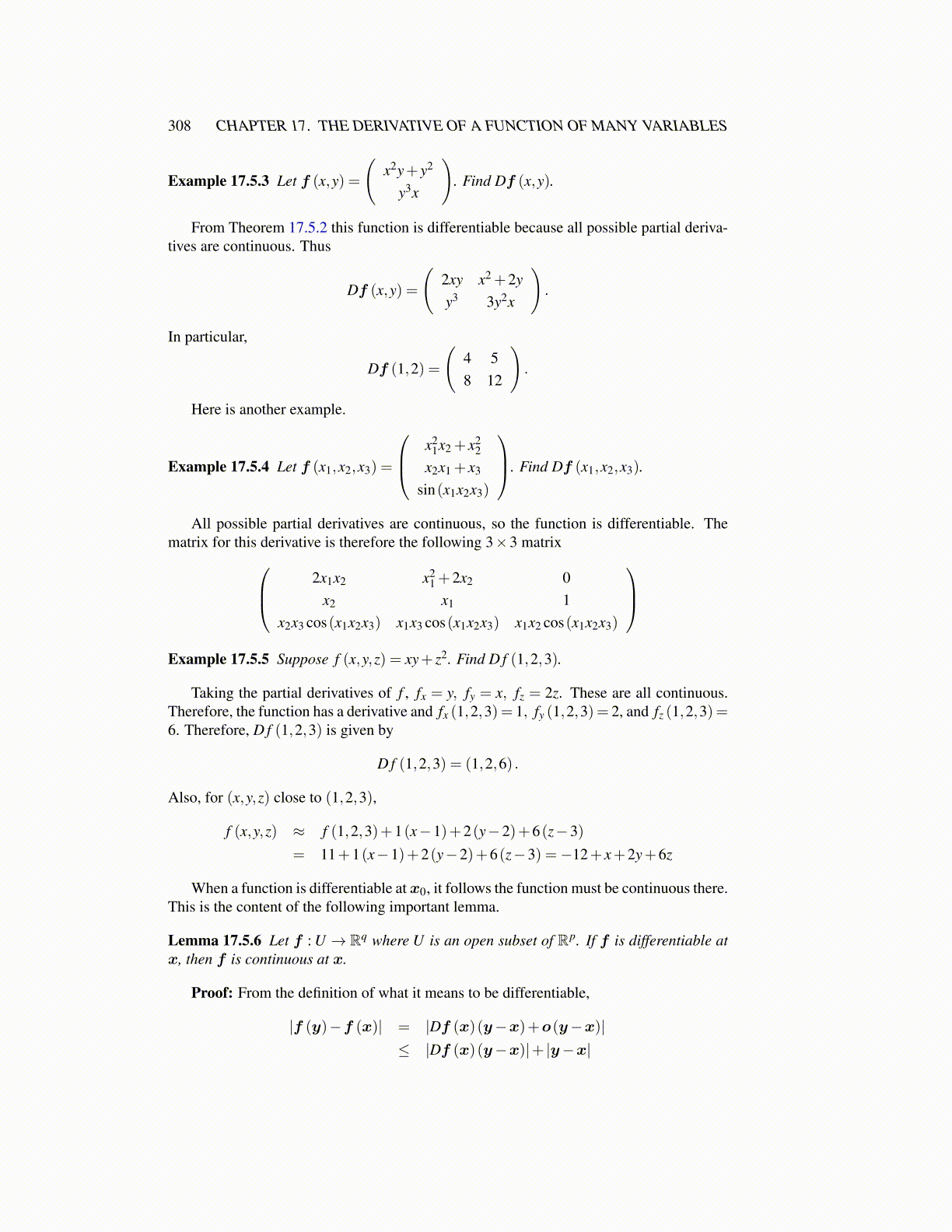
308 CHAPTER 17. THE DERIVATIVE OF A FUNCTION OF MANY VARIABLES
Example 17.5.3 Let f (x,y) =
(x2y+ y2
y3x
). Find Df (x,y).
From Theorem 17.5.2 this function is differentiable because all possible partial deriva-tives are continuous. Thus
Df (x,y) =
(2xy x2 +2yy3 3y2x
).
In particular,
Df (1,2) =
(4 58 12
).
Here is another example.
Example 17.5.4 Let f (x1,x2,x3) =
x21x2 + x2
2
x2x1 + x3
sin(x1x2x3)
. Find Df (x1,x2,x3).
All possible partial derivatives are continuous, so the function is differentiable. Thematrix for this derivative is therefore the following 3×3 matrix 2x1x2 x2
1 +2x2 0x2 x1 1
x2x3 cos(x1x2x3) x1x3 cos(x1x2x3) x1x2 cos(x1x2x3)
Example 17.5.5 Suppose f (x,y,z) = xy+ z2. Find D f (1,2,3).
Taking the partial derivatives of f , fx = y, fy = x, fz = 2z. These are all continuous.Therefore, the function has a derivative and fx (1,2,3) = 1, fy (1,2,3) = 2, and fz (1,2,3) =6. Therefore, D f (1,2,3) is given by
D f (1,2,3) = (1,2,6) .
Also, for (x,y,z) close to (1,2,3),
f (x,y,z) ≈ f (1,2,3)+1(x−1)+2(y−2)+6(z−3)= 11+1(x−1)+2(y−2)+6(z−3) =−12+ x+2y+6z
When a function is differentiable at x0, it follows the function must be continuous there.This is the content of the following important lemma.
Lemma 17.5.6 Let f : U → Rq where U is an open subset of Rp. If f is differentiable atx, then f is continuous at x.
Proof: From the definition of what it means to be differentiable,
|f (y)−f (x)| = |Df (x)(y−x)+o(y−x)|≤ |Df (x)(y−x)|+ |y−x|